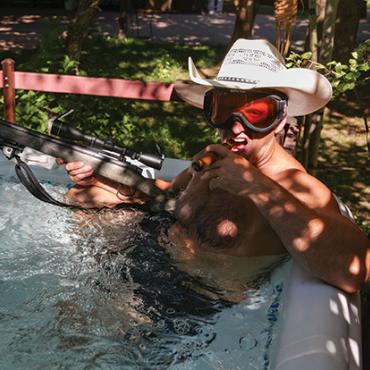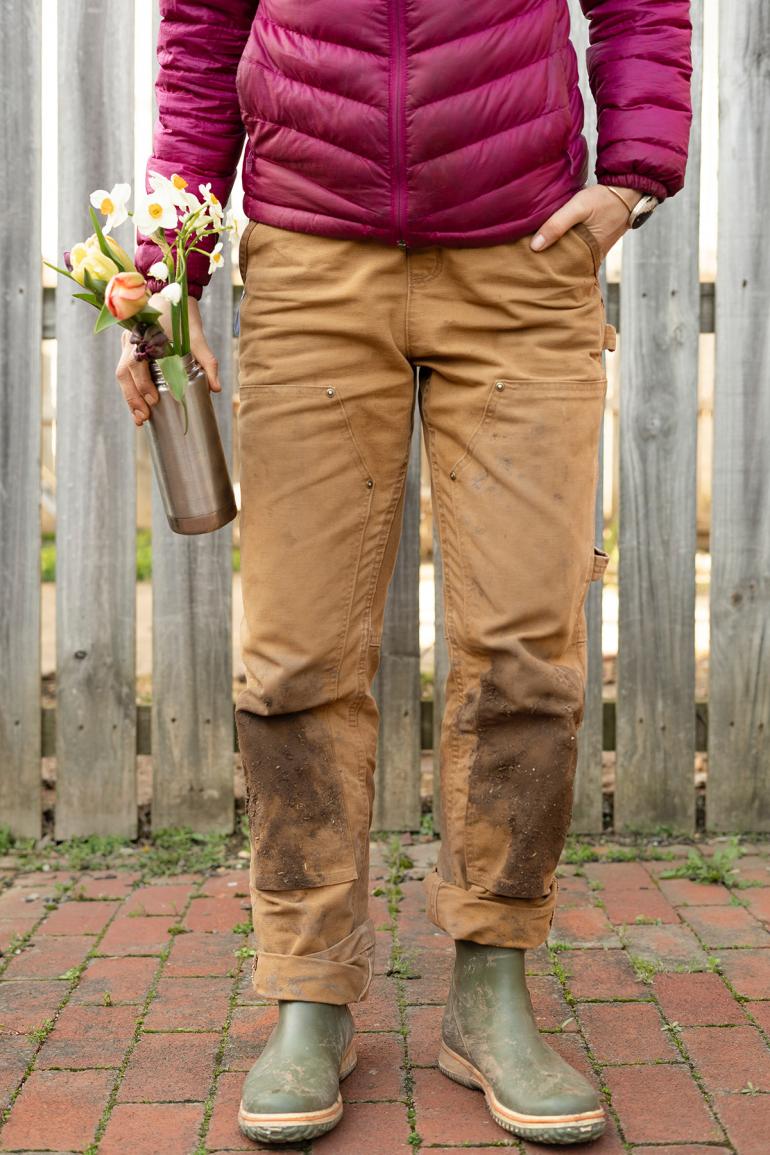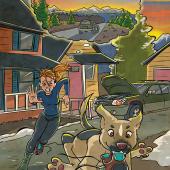The Importance of Being Rugged
Dissecting the Carhartt craze.
In 1889, Hamilton Carhartt started making pants. They were no ordinary pants, though. Designed to "endure the rigors of a hard day’s work," they were constructed with the heaviest, most durable material possible. He’d had it with flimsy fabrics and cushy clamdiggers. Even Levis were too thin-skinned for old Hamilton—hard-working men like him needed super-rugged trousers that would hold up while mending barbed-wire fences, hauling ore, repairing tractors, or riveting I-beams 300 feet up.
Over 100 years later, Carhartt pants still have the rugged outdoor worker in mind. They’re made of thick, heavy denim that’s initially about as comfortable as a pair of wooden shoes and pliable as a piece of rebar. Huge hammer loops dangle from each side, and lining each pant leg are deep pockets for holding water-pump pliers and extra branding irons.
Carhartt’s trademark color is "Brown Duck," a dark orange hue resembling influenza phlegm, or long-neglected cheddar cheese. Mud, cow vomit, deer innards, and cerebral-spinal fluid blend right in to this color, so a guy can go right from the pig sty to the bar without stopping at the laundry.
But farmers, miners, and construction workers aren’t the only ones wearing Carhartts these days. Men and women from all walks of life and every age group are caught in a Carhartt craze, raiding the ranch-supply stores like foxes in a henhouse. They’re buying up Carhartt pants by the bushel, and shuffling around Bozeman in stiff orange hordes.
What makes a slop-shoveling ranch hand’s breeches so appealing to the general public? Some say it’s the low cost; these pants sell for a paltry 15 bucks. Okay, so they’re cheap and durable—but what about secondhand Levis? And bargain prices don’t explain why many people complement their cut-rate orange slacks with Tommy Hilfiger shirts and spendy Rockport loafers.
Carhartt’s trademark color is "Brown Duck," a dark orange hue resembling influenza phlegm, or long-neglected cheddar cheese.
What’s happening, it seems, is that more and more people are starting to hear The Call of the Rugged, that familiar American call-to-arms for cigars, tattoos, disheveled hair, and three-day beard growths. It’s the battle cry of those who can’t stand being pretty, comfortable, and neat—real men and women know that those things are for wimps. Being rough and hardy is what it’s all about, and discomfort just comes with the territory.
In this world of romantic ruggedness, four-wheel drive sport utility vehicles are a must. And Carhartts are the Hummers of the pants department. They’re tough as rhinoceros hide. They’ll run over anything. They’ll take a direct hit from a frenetic Old Navy shopper and just keep on going.
These pants announce to the world that you’re no Dockers-wearing softie—you’re a tough, rugged, outdoor adventurer. Your hands aren’t tender from pushing pencils all day; they’re coarser than a cat’s tongue. You eat dirt and drink tar. You mountain bike and rock climb and you can pin a polar bear in ten seconds flat. You attach carabiners to everything you own in case you have to rappel off the face of the city courthouse or scale the clock tower to save a wounded pigeon.
Carhartts offer the utmost in staying power for the rugged human—with riveted seams and two layers on the knees, these pants last longer than a presidential election. Carhartt wearers may not be able to bend at the knee, but it’ll take more than being drug behind a horse for two miles to put them out of commission.
So the next time you see somebody trudging stiff-legged across town, the lower half of his body wrapped in wall-tent canvas the color of orangutan fur, approach him and ask if those things he’s wearing are comfortable. "Hell, no," he’ll reply, beaming. And with a nod, he’ll be off—lumbering ruggedly, carabiners a-clinking, searching for adventure.












